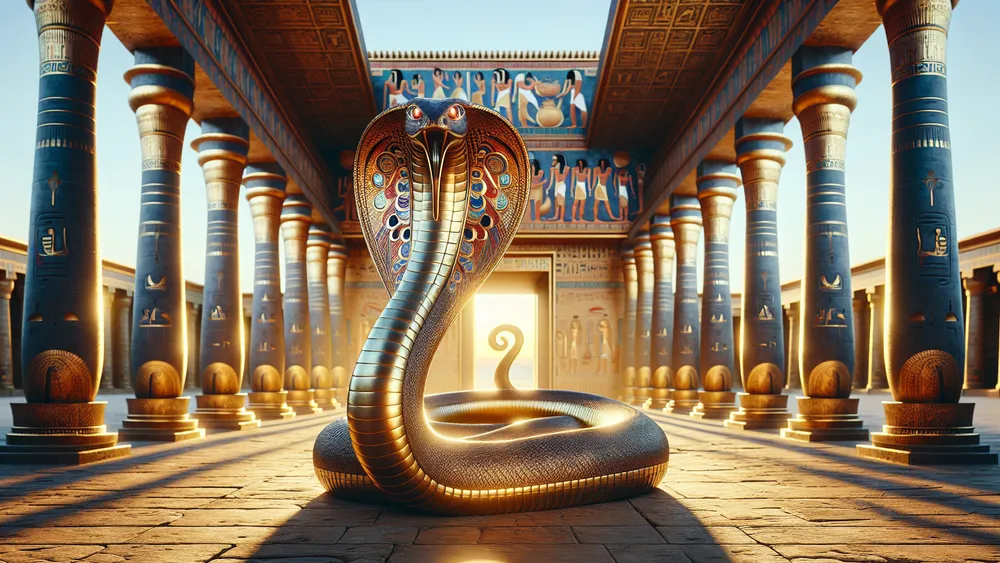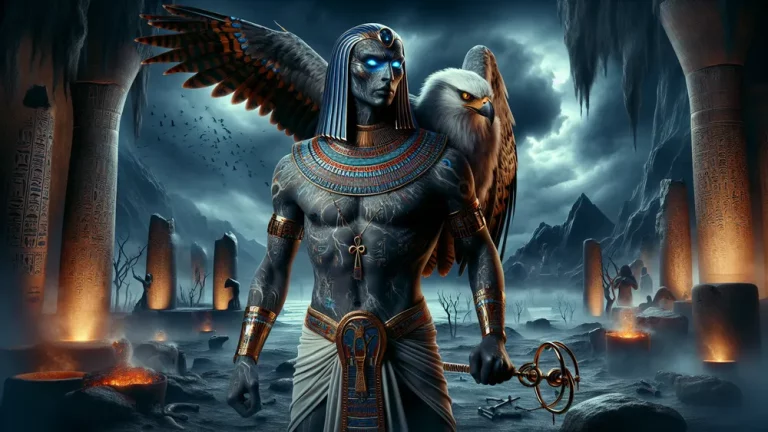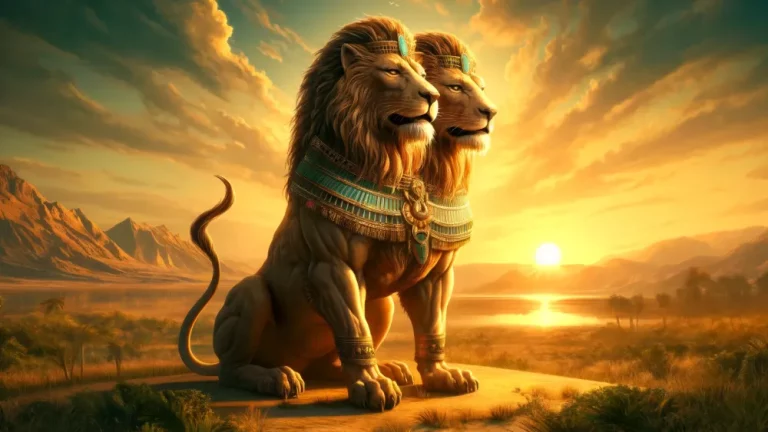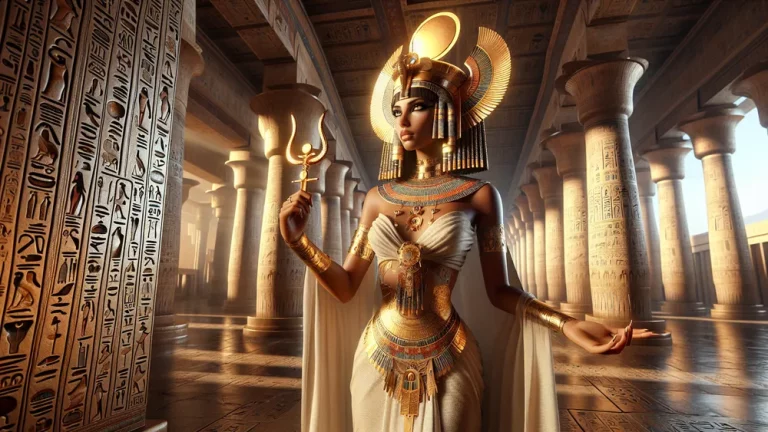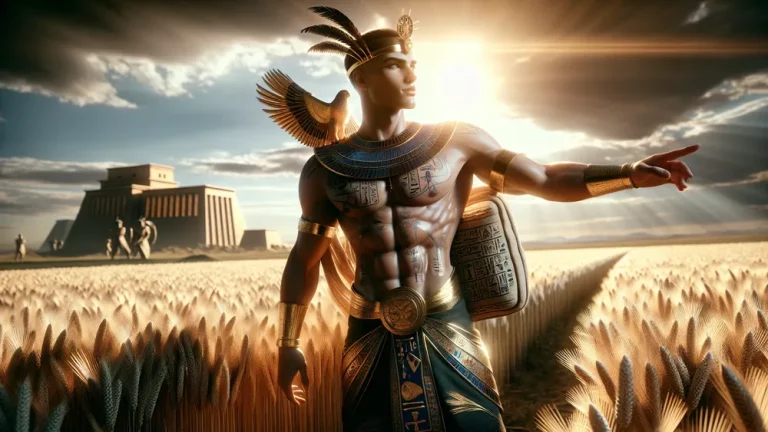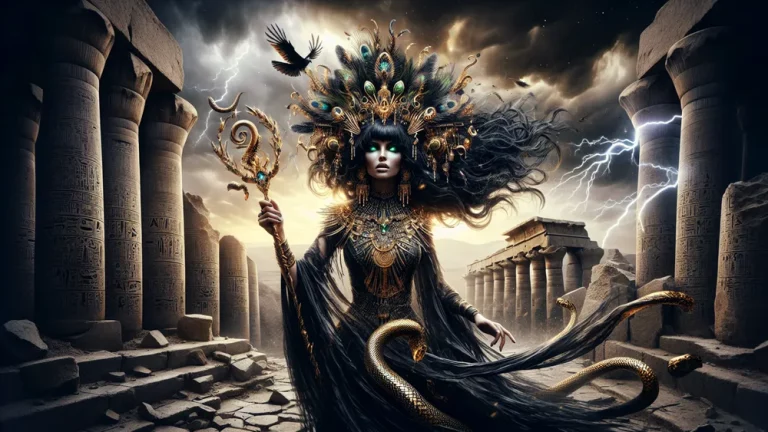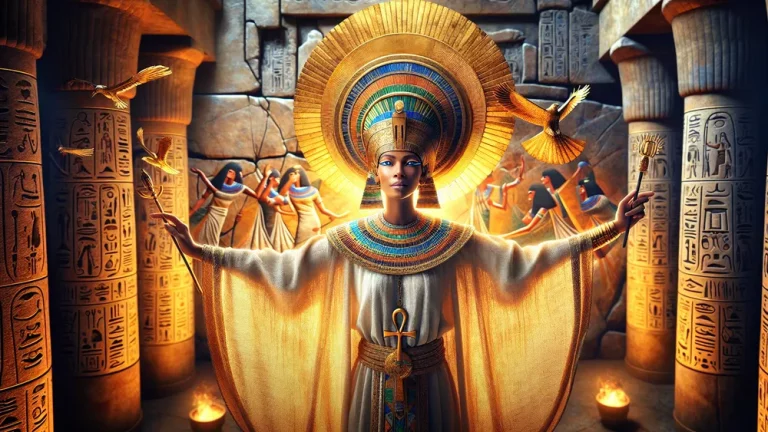Uraeus: Symbol Of Egyptian Royalty And Deity
Greetings on an investigation into the Uraeus, which held great importance in ancient Egyptian traditions. Much like a cap signifies leaders in today’s times, the Uraeus was an emblem of control and divine safeguarding for rulers. This blog post will take you through the interesting Uraeus world, from where it started and its historical value to its meanings and how often it appeared in artworks and stories.
Key Points:
- Uraeus: Sign of control, nobility, and divine protection in ancient Egypt.
- Origins: Greek ouraios meaning on its tail, old Egyptian iaret meaning rising cobra.
- Symbolism: Represent safety, divine right of rulers, linked with goddess Wadjet.
- Historical Use: Appeared in royal families’ artifacts, crowns, and clothing.
- Artistic Depiction: Seen in statues, jewelry, and carvings as a cobra ready to strike.
- Modern Influence: Continues to influence art, fashion, and popular culture today.
- Cultural Impact: Important symbol of royal authority, divine protection, and pharaoh’s legitimacy.
Whether you love myths or just curious, you will learn how this snake sign is connected with power, leadership, and divinity in old Egypt. Let’s begin this journey and uncover the history and myths making the Uraeus a subject of interest.
Uraeus: Overview and Key Facts
| Important Point | Description |
|---|---|
| Explanation | The Uraeus is a fancy straight-up style of an Egyptian cobra, used as a sign of control, nobility, god, and high power in old Egypt. |
| Word Origins | The term “Uraeus” comes from the Greek word “ouraios,” which means “on its tail.” Old Egyptian word is “iaret,” meaning “rising cobra.” |
| Cultural Importance | The Uraeus was a strong sign of safety and thought to shoot flames at enemies, keeping safe the pharaoh and the country. |
| Historical Use | The Uraeus was used a lot during different royal families, often shown on the headgear of leaders and gods. |
| Archaeological Items | Many things found, like statues, jewels, and tomb pictures, show the Uraeus, showing its big role in old Egyptian ways. |
| Link with Gods | The Uraeus is closely linked with goddess Wadjet, who was seen as a guardian of the rulers and the Egyptian land. |
| Symbol of Power | The Uraeus showed the divine right of the rulers to govern, often seen on crowns and kingly gear. |
| Seen in Art | The Uraeus appears in many forms of old Egyptian art, including carvings, drawings, and lucky charms, often shown as a cobra ready to hit. |
| Today’s View | Now, the Uraeus is still a sign of old Egyptian ways, affecting today’s art, clothes, and pop culture. |
Getting to Know the Uraeus
Comprehending the Uraeus is best done by looking at where it came from, its historical backdrop, and what it meant deeply within old Egyptian ways.
What Exactly is Uraeus and Where Did the Term Come From?
The Uraeus is a decorated image of a standing up Egyptian snake, a strong sign in old Egyptian customs. The word “Uraeus” is from the Greek word “ouraios,” which means “on its tail,” while the old Egyptian word is “iaret,” which means “standing up snake.” This sign was not just placed in art but was also a big important sign of safety and holy control. Just like a national symbol today shows a nation’s control, the Uraeus showed the pharaoh’s holy right to lead and his role as the guarding figure of Egypt. In old Egyptian ways, people believed the Uraeus had magic skills, even being able to spit fire at threats to protect the pharaoh and the country. Let’s note some important points about its meaning:
- Safety: The Uraeus was believed to keep the pharaoh safe by pushing away bad things and enemies.
- Supreme Control: It showed the pharaoh’s top power and holy right to lead.
- Holy Power: The Uraeus was often linked with gods, especially the goddess Wadjet, making stronger the pharaoh’s holy standing.
The Uraeus symbol in ancient Egypt represented safety for the pharaoh, supreme control, and holy power.
Why It Mattered in History
The Uraeus had a big role in old Egypt’s history, being a strong sign of protection, kingship, and holy power. This sign showed up on the headpieces of pharaohs, showing their holy right to lead and their job as protectors of the land. Thought to have magical powers, the Uraeus could keep away evil and enemies, just like how today’s symbols show a country’s strength and rule.

Not just important in one time period, each dynasty treated the Uraeus as a key sign of their rule.
Throughout many ruling families, the Uraeus stayed important and was shown on pharaoh’s crowns and special clothes. During the New Kingdom especially, the Uraeus was often seen on the blue war crown (Khepresh) and the double crown (Pschent), showing the unity of Upper and Lower Egypt. Famous finds like the golden mask of Tutankhamun feature the Uraeus, proving its lasting importance. These items show clearly the Uraeus’s role in old Egyptian ways and its link to power and holy protection. Here are some main points about its historical importance:
- Sign of Safety: Belief was that the Uraeus kept the pharaoh and the land safe from bad things and enemies.
- Use Across Dynasties: It was used by different ruling families, showing continuity and stability.
- Proof in Artifacts: Finds like Tutankhamun’s golden mask make clear the Uraeus’s importance in old Egyptian culture.
The Meaning Behind the Uraeus
To understand fully the importance of the Uraeus, exploring the deeper meanings it had and the symbols it represented in ancient Egyptian customs is crucial.
How Uraeus Shows Power and Royalty
The Uraeus is an important sign of kingship and power in old Egyptian customs, often seen as a standing snake on the headgear of pharaohs. This mark was not just for looks; it showed the pharaoh’s holy right to lead and their job as earth’s representative of the gods. Like a crown today shows a ruler’s power, the Uraeus was a visible sign of the pharaoh’s top power and safety over Egypt. People thought the Uraeus gave the pharaoh the power to keep away bad and enemies, making stronger their spot as both a holy and real leader. Here are some key points about its meaning:
- Kingship: The Uraeus was a main part of pharaohs’ special clothes, showing their royal standing.
- Holy Right: Representing the pharaoh’s holy right to lead, given by the gods.
- Safety: Thought to keep the pharaoh and the land safe from danger.
The Goddess Wadjet
The Uraeus is tied closely to Wadjet, a goddess often shown as a standing snake. Wadjet was one of the first gods of old Egypt and acted as a strong sign of safety and royal power.
In old stories of Egypt, she was the patron and protector of Lower Egypt, and her image was thought to protect the pharaoh and the land from harm. Like a guardian figure now, Wadjet’s presence on the pharaoh’s crown stood for holy safety and right.
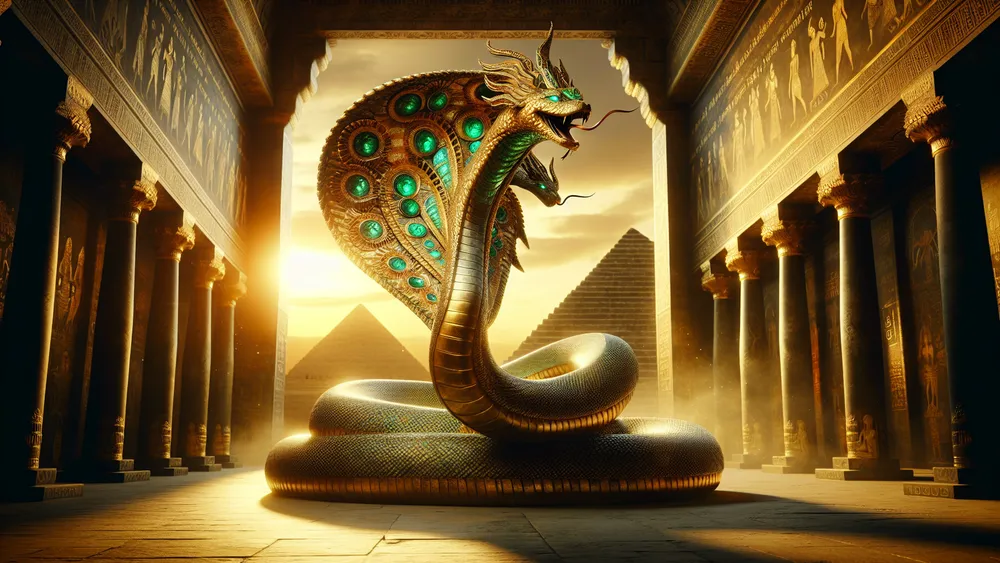
Her protecting traits were not just in the real world; she was also thought to have magic skills that could keep away evil and foes, making sure the pharaoh’s rule stayed unchallenged and good.
Uraeus in Egyptian Crowns
The Uraeus found itself prominently in many kinds of old Egyptian crowns, and each had its own special meaning. The Nemes crown, often seen on pictures of kings like Tutankhamun, was a striped head cloth that had Uraeus at the forehead, showing the king’s holy power and safety. The Khepresh, or blue fight crown, was worn by kings during wars and events.
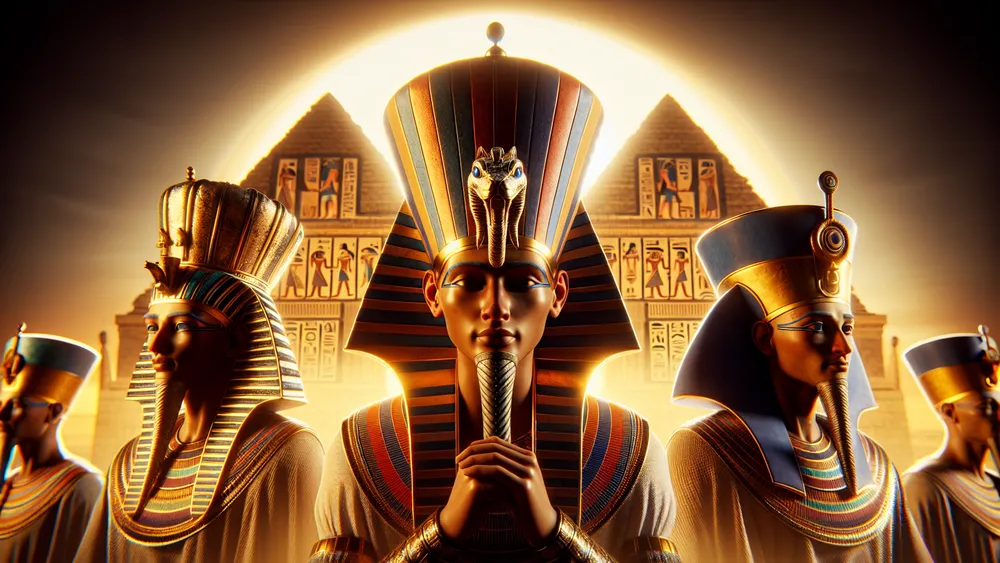
This crown too had the Uraeus, showing the king’s role as a warrior king and protector of the land. Lastly, the Pschent, or double crown, mixed the white crown of Upper Egypt and the red crown of Lower Egypt, with Uraeus clearly shown. This crown stood for the union of the two lands and the king’s rule over whole Egypt.
Every one of these crowns used the Uraeus to show special sides of the king’s power and right to lead. The Nemes crown, with its Uraeus, showed the king’s unending link to the gods and their role as a holy leader. The Khepresh, with Uraeus, pointed to the king’s military skill and safe-keeping powers. The Pschent, with the Uraeus, meant the king’s power over a united Egypt, showing both political and holy leadership. To get a better picture of these crowns’ meanings, see the table below:
| Crown | Description | Meaning |
|---|---|---|
| Nemes | Striped head cloth with Uraeus | Holy power and safety |
| Khepresh | Blue fight crown with Uraeus | Military skill and safety |
| Pschent | Double crown with Uraeus | Union of Upper and Lower Egypt, rule and holy leadership |
The Uraeus in ancient Egyptian crowns symbolized different aspects of the king’s power and leadership roles.
Stories and Myths
To truly understand the Uraeus, it is helpful to explore the many stories and myths about this strong symbol.
Uraeus in Creation Stories
In the old tales of how things began, the Uraeus has important role as a symbol of godly power and safety. A very well-known story tells about the sun god Ra, who has Uraeus on his forehead. This snake, meaning the goddess Wadjet, came out from Ra’s head to save him from his enemies, showing the start of godly force and the keeping of world order.
Like how some see a guardian in other beliefs, the Uraeus in these tales works as a protective force that makes sure creation stays steady. Through many stories, the Uraeus appears as a strong and always watchful being, showing its role in keeping the balance between chaos and order in the world.
Sorting Out Apep and Wadjet
The mix-up between Apep and Wadjet happens often when Wadjet looks like the Uraeus snake. These two gods show very different ideas in Egyptian stories. Apep, also called Apophis, is chaos and badness, shown as a huge snake or dragon attacking the sun god Ra and the world order. But Wadjet, as Uraeus, means safety, kingship, and rule.
Apep is a bad force, like a storm, while Wadjet is a guard, keeping things safe. Apep tries to break and bring mess, and Wadjet works to keep peace and order. Knowing these differences helps make clear their special symbols and jobs in the stories.
Uraeus in Art and Culture
Now we have looked at how the Uraeus matters in myths, let’s see how this strong symbol showed up in Egyptian pictures, and its long effect on modern life.
How Uraeus Appears in Art
In old Egyptian art, the Uraeus shows up often in different shapes, each one made carefully to show its strong meaning. Statues show the Uraeus as a cobra standing up, ready to strike, meaning safety and divine rule.
This look is seen on king headdresses, like the well-known gold mask of Tutankhamun, where the Uraeus sits next to a vulture, showing goddesses Wadjet and Nekhbet. Pictures and carvings show the Uraeus too, often coming out from the heads of gods and rulers, reinforcing their divine right to lead.
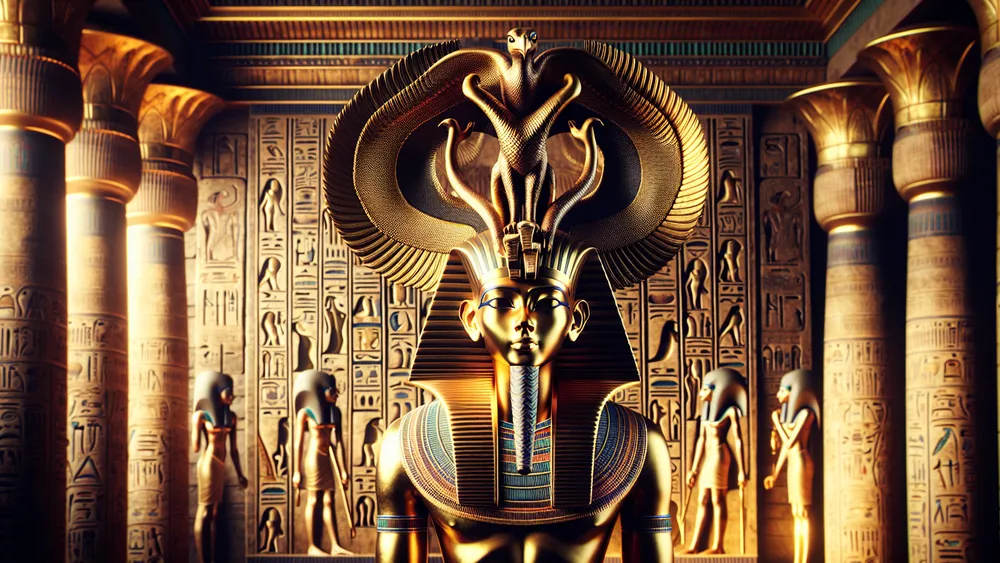
These art forms work not just as pretty things but also as strong signs of the king’s link to the gods and their role as Egypt’s guardian.
Jewelry also shows the Uraeus, made with great detail and often with precious gems. Necklaces and charms with the Uraeus were seen as giving protection, worn by both royals and common folks. Notable items like the pectoral of Senusret II, a beautiful piece, have a main Uraeus with other protective signs. These items show the skill and symbolic value of the Uraeus in old Egyptian life. So, to sum up, the Uraeus shows in many art types, each one helping to show its role as a sign of safety, royalty, and divine rule. Here are some important points about how it is shown:
- Statues: Often shown as a cobra standing up on headdresses and statues.
- Pictures and Carvings: Coming out from the heads of gods and rulers.
- Jewelry: Made with precious gems, seen in necklaces and charms for safety.
Uraeus Today
In modern times, the Uraeus remains a strong symbol, used in different ways across today’s art, clothing, and popular culture. Many artists put the Uraeus into their works to show ideas of safety, strength, and old mystery, just like how the ankh or Eye of Horus is used. Fashion creators have taken ideas from the Uraeus, making jewelry and other items that reflect its royal and protective traits.
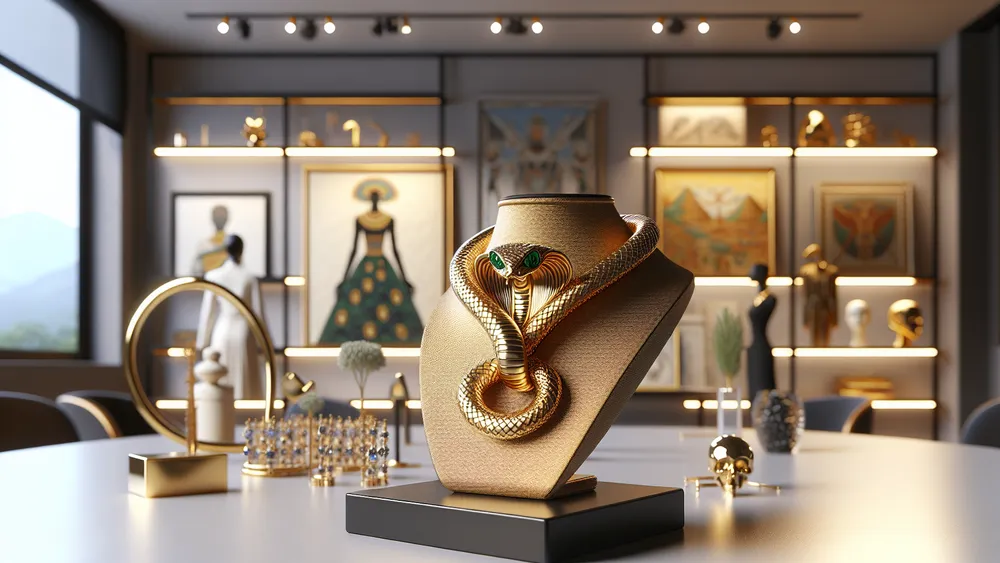
For example, top fashion names have put out lines with snake patterns like the Uraeus, showing both beauty and power. Also, the Uraeus is seen in popular culture, from movies and video games to books, where it often shows old wisdom and power. This lasting symbol keeps grabbing attention and giving ideas, linking the old with the new in a way that is both meaningful and eye-catching.
FAQs
1. What is the significance of Uraeus in ancient Egyptian culture?
The significance of Uraeus in ancient Egyptian culture lies in its representation of royal authority, divine protection, and the pharaoh’s legitimacy to rule.
2. How is Uraeus related to the goddess Wadjet?
Uraeus is related to the goddess Wadjet as it represents her protective and royal attributes in ancient Egyptian mythology.
3. What are the different types of crowns that feature Uraeus?
The different types of crowns that feature Uraeus include the Nemes, Khepresh, and Pschent, each symbolizing various aspects of pharaonic power and divinity.
4. How is Uraeus depicted in modern art and culture?
Uraeus is depicted in modern art and culture as a symbol of ancient Egyptian heritage, often appearing in fashion, jewelry, and contemporary artistic expressions.

